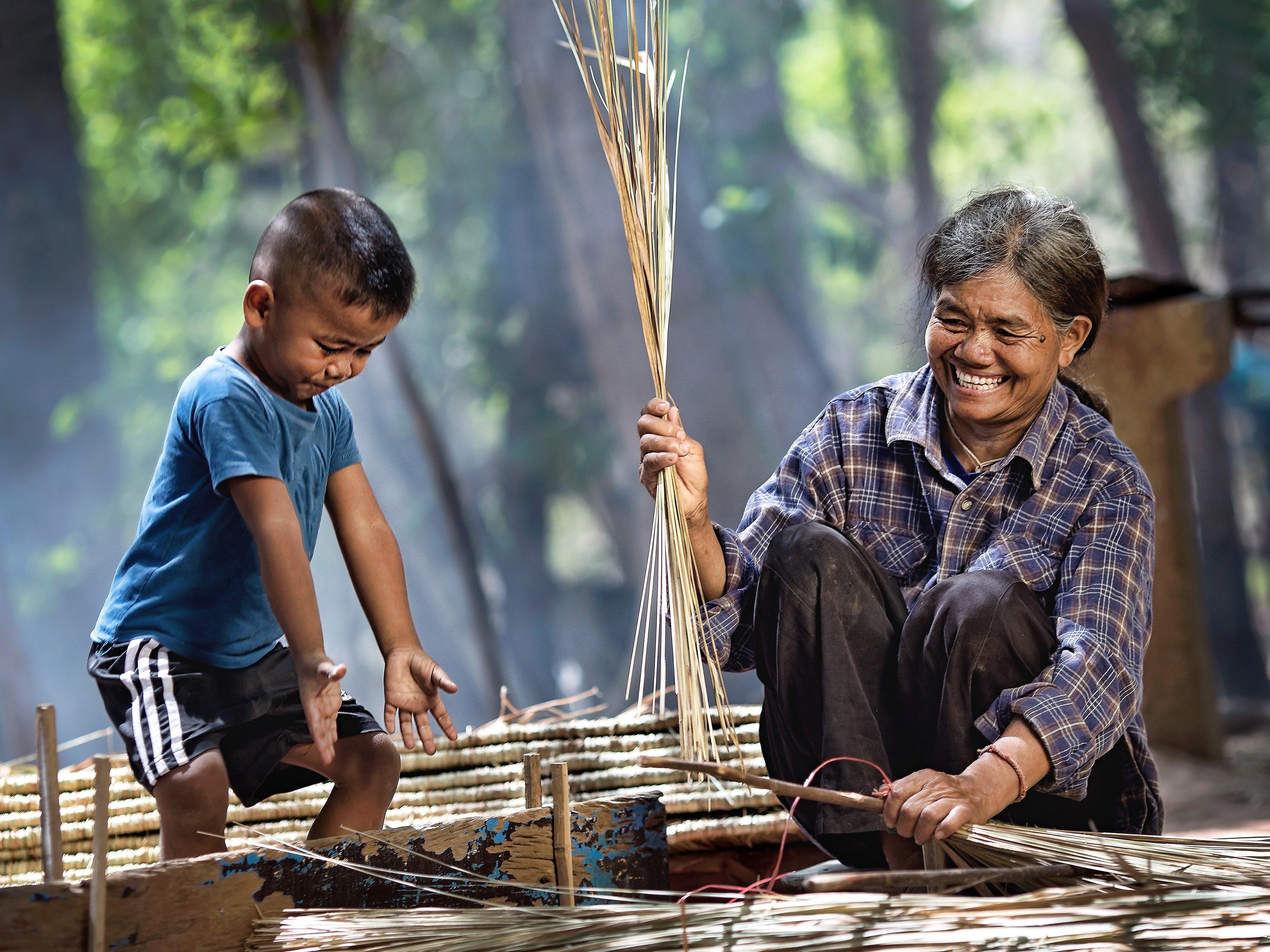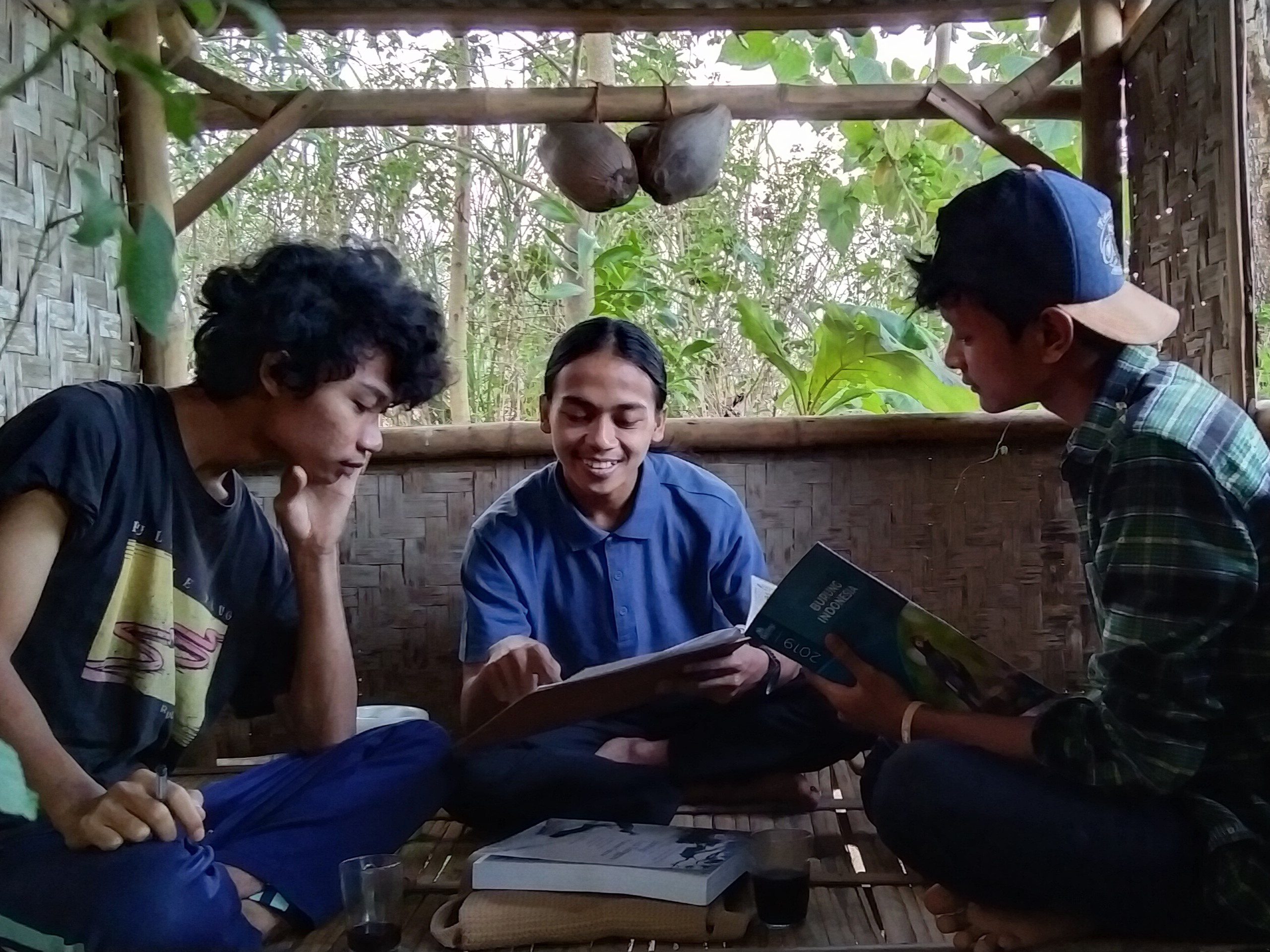Socio-ecological Aspects Have a Major Role in the Success of Conservation

Seorang anak membantu neneknya membuat atap rumah (Foto Ilustrasi : Ninja SS/Shutterstock)
-
Date:
04 Apr 2023 -
Author:
WIT Indonesia
Indonesia frequently fails at environmental protection since the idea is not well ingrained. Elements of local culture (local wisdom) are frequently under-examined, making it challenging for conservation initiatives to be accepted by the community. According to a cross-university study, socio-ecological factors have an impact on conservation project success as well.
Dr. Angga Dwiartama, a researcher from the ITB School of Biological Sciences and Technology, stated that conservation is crucial in Indonesia due to population loss, forest damage, and other issues. “In Indonesia and throughout the world, community-based conservation has shown to be effective in resolving these issues. Social forestry is an example of community-based conservation that currently exists in Indonesia. But whether social forestry is effective or not is up for discussion,” Angga addressed the KEHATI group.
Angga stated that prior studies on community-based conservation have concentrated on quantitative indicators such as forest area, population of key species, number of conflicts, and so on. This was stated during the presentation of the results of the research conducted at the end of January 2023 at the KEHATI office.
“Quantitative indicators are frequently employed to assess success or failure. Despite the fact that the socio-ecological context has a significant impact on conservation efforts,” according to Angga.
Angga provided an illustration of how a conservation effort might be successful in a location when the objectives are simple to meet and the quality of life is generally constant. In contrast, in other regions where people’s concerns are more complicated, it might be very challenging to accomplish conservation goals. Angga and his colleagues presented the findings of their investigation on how the community develops ecological resilience and its influence on the creation of community-based conservation initiatives.
Three researchers from different universities collaborated on the study titled “Seeing Beyond the Success and Failure of Community in Indonesia,” including Dr. Angga Dwiartama from the School of Life Sciences and Technology ITB with expertise in Agricultural, Food, and Environmental Sociology, Rhino Ariefiansyah, S.Sos., M.E.A.P. from the UI Anthropology Department with expertise in Visual Anthropology, and Hendra Maury, S.Si., M.Sc. from the Department of Biology, MIPA, Cendrawasih University with an Ecology competency.
Resilience Approach
The researchers assessed a number of neighborhood conservation initiatives. The outcomes were incredibly inconsistent. There are those who assert that the conservation project is successful and those who assert that it is unsuccessful. But there were many different contexts for both success and failure. Angga uses the example of the billions of dollars that have been spent on conservation, which was successful with ease because both the ecosystem and the people were in good health.
While in other locations, substantial amounts of money were distributed. But for a variety of reasons, the conservation initiative was never a success. For instance, there is a lot of warfare, and the area is susceptible to financial instability.

Edukasi dan sosialisasi tentang hutan dan konservasi kepada pemuda komplek Baitul Ma’mur di gubug Taman Hutan Mikro, Desa Serbajadi, Natar, Lampung Selatan (foto : KEHATI)
“We want to find out what causes conservation efforts to succeed or fail. We wish to understand the socio-ecological background of it. The use of a resilience approach is one strategy for capturing the resilience and toughness of the community, in addition to the success of conservation,” Angga added.
The purpose of the study was to examine how well people could use their surroundings to adapt to shocks and changes. These shocks and changes are designed to be local in character, which means that there are various external influences affecting people in each region.
The community might be the mover, the planner, the executor, or the beneficiary in conservation, making up a wide range of participants. People who are already affiliated with NGOs, both new and established ones, are used in the research.
Having Several Strategies
The study’s findings were successful in outlining the community’s livelihood plan. The community groups under study employ a range of subsistence techniques. They are adaptable enough to withstand shocks from the economy and the environment.
Another intriguing aspect is how adaptable and flexible these communities are. They can switch between a market economy where commodities like coconuts, rubber, or cinnamon are produced and a subsistence economy where they hunt or gather forest goods.
They lose resilience when such adaptability is gone, such as when they can no longer reach the forest. We want to underscore the need of keeping social spaces open so that people may adjust to changing circumstances.
The study also highlighted a number of stressors that could affect community resilience, including price changes, informational accessibility, climate change, and outside development pressures that can have a significant influence, such as oil palm and wood concessions. Via its representatives, the community is informed of the results of the various studies in order to get their feedback and learn more about how they view the value of conservation and resilience.
When contacted separately, Rio Bunet, Manager of the Forest Ecosystem Program at the Kehati Foundation, stated that in order to develop a conservation concept, the distance between the community and the concept must also be seen. “Sometimes we’ve explained the details, but they still don’t see any benefit for them; don’t put us through that kind of situation,” Rio said.
Conservation is a concept that appears to be rooted in people’s culture, for example, because it is related to local beliefs. Communities whose livelihoods rely on a spring will be more easily persuaded to conserve the spring than they have been in the past.
Rio stated that funding agencies such as Kehati sometimes bring projects directly to the community, whereas the accompanying NGOs and implementers in the field, or any institutions that work with Kehati, are not always sensitive to local culture.
“Or local knowledge is not being tapped. In fact, we need to understand their cultural concept of conservation “Rio continued.
